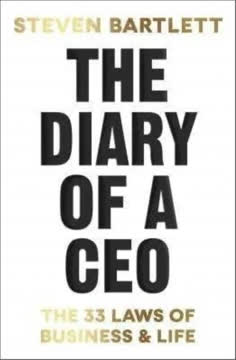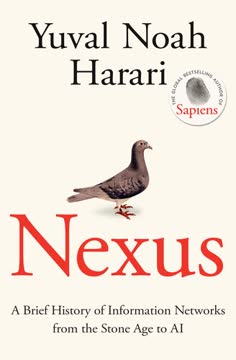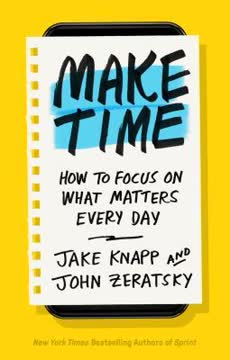つの重要なポイント
1. 賢く優先順位をつける:目標ではなくシステムを設定する
「例えば、「私の目標は10万語を書くことだ」と言う代わりに、「私のシステムは毎朝1時間で500語を書くことだ」と言い換えます。そして最終的には10万語に達するでしょうが、そのように考えません。システムとして考えます。」
目標よりもシステムを重視する。 伝統的な目標を設定する代わりに、望む結果に導くシステムを作ることに焦点を当てましょう。このアプローチは、目標に達するまでの「失敗」のプレッシャーを軽減し、より持続可能な達成への道を提供します。
実践的な実装方法:
- 望む結果を特定する
- その結果に向かう日々または週ごとのシステムを設計する
- 終わりの目標に固執するのではなく、システムを一貫して実行することに集中する
結果からプロセスに焦点を移すことで、モチベーションが高まり、途中での達成感が増すでしょう。
2. 最高のパフォーマンスを発揮するために日々の構造を整える
「執筆の日には、単語数を設定し、朝に「今日は700語書かなければならない」と言い、オフィスに電話を持ち込まず、メールを開かず、700語に達するまで何もしません。その後は他のことを自由に行います。」
クロノタイプを最適化する。 自然なエネルギーリズム(クロノタイプ)を理解することで、生産性が大幅に向上します。ピークの認知時間に合わせて日々のスケジュールを構築し、最大の効率を目指しましょう。
主要な戦略:
- 自分のクロノタイプ(朝型、中間型、夜型)を特定する
- ピークの認知時間に深い作業をスケジュールする
- エネルギーが低い時間帯には負担の少ないタスクを行う
- 集中力とエネルギーを維持するために定期的な休憩を取る
- 生産的な習慣を強化するために場所に基づく儀式を作る
自然なリズムに合わせて作業スケジュールを調整し、サポート環境を作ることで、生産性と仕事の満足度が劇的に向上します。
3. 自動化と会議の最適化で効率を高める
「アウトソーシングの考え方には、年間30回以上行うことがあるなら、それを自動化またはアウトソーシングする価値があるという標準的なアイデアがあります。」
自動化と最適化。 繰り返し行うタスクを特定し、それを簡略化または排除する戦略を実施しましょう。これにより、より重要な作業に時間と精神的エネルギーを割くことができます。
効率向上のためのブースター:
- 30xルールを適用する:年間30回以上行うタスクを自動化またはアウトソーシングする
- ZapierやKeyboard Maestroのようなツールを使用してタスクを自動化する
- 会議時間を減らすために非同期コミュニケーション(例:ビデオ更新)を実施する
- コンテキストスイッチを最小限に抑えるために類似のタスクをまとめる
- 定期的なタスクやコミュニケーションのためのテンプレートを作成する
低価値の活動に費やす時間を体系的に減らすことで、高影響の作業や戦略的思考のためのスペースを作り出します。
4. デジタルの誘惑を抑えて集中力を高める
「Facebook、Instagram、YouTube、Twitter、Gmailを携帯から削除しました。Safariさえもオフにしました。」
集中力のためのデジタルデトックス。 デバイスは便利ですが、重大な誘惑の源にもなります。デジタルの中断を減らす戦略を実施することで、集中力と生産性が劇的に向上します。
誘惑を抑える技術:
- 必要のないアプリを携帯から削除する
- 集中作業中に「おやすみモード」を使用する
- 作業時間中にウェブサイトブロッカーを実施する
- デバイスとの物理的な距離を作る
- メールやソーシャルメディアのチェック時間を特定の時間にスケジュールする
デジタル環境を意識的に設計することで、注意力を取り戻し、意味のある作業や個人的な交流に向けることができます。
5. 定期的に振り返り、自己疑念を克服し成長する
「私はまだ非常に緊張することが嬉しいです。もし「私はここにいるべきだ」と思う日があったら、そうなりたくありません。常に自分を見つめ、今のキャリアの位置を問い続けたいです。」
自己反省を受け入れる。 定期的な内省は、インポスター症候群を克服し、成長の分野を特定し、成長マインドセットを維持するのに役立ちます。自己疑念を妨げではなく、動機付けとして捉えましょう。
反省の戦略:
- 半年ごとに「ライフチェックアップ」をスケジュールし、キャリアの満足度と成長を評価する
- 自己疑念を改善の機会として再構築する
- 同僚やメンターから具体的で実行可能なフィードバックを求める
- 達成やポジティブなフィードバックの「Spark Joy」フォルダーを保持する
- 自己疑念を挑戦的な機会を追求するシグナルとして使用する
思慮深い反省の習慣を育むことで、潜在的な障害を個人的および職業的成長の踏み台に変えることができます。
6. 戦略的なネットワーキングで強力なつながりを築く
「既存のネットワークには驚異的な力があります。そして、ほとんどの人がネットワークを改善するためにできる最も影響力のあることは、休眠状態のつながりを再活性化することです。」
既存のつながりを活用する。 新しいつながりを作ることに集中するのではなく、既存の関係を再燃させ、強化することに時間を投資しましょう。このアプローチは、予期しない機会やサポートにつながることがあります。
ネットワーキングの戦略:
- 休眠状態の連絡先に「あなたのことを考えている」というメッセージを定期的に送る
- 関連するコンテンツや機会をネットワークと共有する
- アドバイスを求めたり、助けを提供して関係を深める
- ネットワーキングの機会を評価する際に「次の火曜日」ルールを使用する
- 他者をサポートする方法を探す「極端な与え」を実践する
真のつながりと相互サポートの心構えでネットワーキングに取り組むことで、強力で有益なプロフェッショナルエコシステムを構築できます。
7. 喜びを育み、イライラを排除してエネルギーを維持する
「喜びをもたらすアイテムを回転させて入れます。家族の写真、最近発表した論文、講演ホストからの称賛のコメント、ポジティブな教育評価などです。通常、少なくとも一日に一度はそのフォルダーに入り、いくつかのことを読みます。それが私が成し遂げたことの一つについて良い気分にさせてくれます。」
喜びを優先し、摩擦を排除する。 喜びをもたらす要素を意識的に取り入れ、繰り返しのイライラを排除することで、エネルギーと生産性が大幅に向上します。
エネルギーを高める戦術:
- ポジティブなフィードバックや達成の「Spark Joy」フォルダーを作成する
- 仕事や個人生活で繰り返しのイライラを特定し排除する
- 真剣な仕事にユーモアを取り入れて視点を維持し、ストレスを軽減する
- ポジティブなルーチンを構築するために「Tiny Habits」メソッドを使用する
- 日々の儀式や視覚的なリマインダーを通じて感謝の気持ちを実践する
感情的およびエネルギー的な状態を積極的に管理することで、モチベーションとレジリエンスを維持し、仕事と生活の中で一貫した生産性と満足感を得ることができます。
最終更新日:
FAQ
What's Time Wise about?
- Focus on Productivity: Time Wise by Amantha Imber delves into mastering daily productivity through the habits of highly effective individuals. It compiles insights from over 150 interviews with successful people across various fields.
- Practical Strategies: The book offers research-backed strategies to enhance productivity, work efficiency, and overall joy. It's designed for anyone looking to manage their time better, from CEOs to students.
- Seven Key Categories: Content is organized into seven categories: Priorities, Structure, Efficiency, Focus, Reflection, Connection, and Energy, each providing actionable advice to optimize time.
Why should I read Time Wise?
- Actionable Insights: The book is filled with practical ideas that can be implemented immediately to improve time management. It's based on real-life experiences rather than just theory.
- Diverse Perspectives: By drawing from a wide range of successful people, it offers various strategies, allowing readers to find methods that resonate with their personal circumstances.
- Reduce Stress and Increase Joy: Imber emphasizes that wise time use can lead to less stress and greater joy, making it valuable for anyone feeling overwhelmed by daily responsibilities.
What are the key takeaways of Time Wise?
- Set Systems, Not Goals: Focus on creating systems for consistent progress rather than traditional goal-setting. This approach helps maintain motivation and reduces feelings of failure.
- Prioritize Your Time: Use decision-making heuristics to determine valuable tasks and commitments, helping you focus on what matters most.
- Embrace Work-Life Imbalance: Strive for a work-life imbalance that favors activities you love, leading to greater satisfaction and fulfillment.
What specific methods does Time Wise recommend for improving focus?
- Chronotype Awareness: Understand your chronotype to schedule important tasks during peak energy times, ensuring productivity when you're most alert.
- The Hemingway Trick: Finish your workday halfway through a task to make it easier to start again the next day, maintaining momentum.
- Scheduled Breaks: Regularly schedule breaks to recharge and maintain focus, as short breaks can improve productivity and mental clarity.
How does Time Wise suggest handling meetings?
- Eliminate Unnecessary Meetings: Critically assess the necessity of each meeting and eliminate those that don't add value, freeing up time for important tasks.
- Batch Meetings: Group meetings together to create dedicated blocks of time, allowing for uninterrupted focus on other work during the rest of the day.
- Set Clear Agendas: Ensure every meeting has a clear agenda and purpose communicated in advance, keeping discussions focused and efficient.
What is the Iceberg Yes concept in Time Wise?
- Understanding Commitment: The Iceberg Yes concept involves looking beyond visible excitement to assess the hidden workload of new commitments.
- Avoid Overcommitment: Recognize the full scope of commitments to avoid feeling overwhelmed, encouraging a thoughtful approach to new opportunities.
- Visualizing the Workload: Think of the visible part of the iceberg as exciting aspects, while the hidden part represents the time and effort required.
What are some effective strategies for reducing digital distractions mentioned in Time Wise?
- Use a kSafe: Lock your phone away in a kSafe for designated periods to eliminate the temptation to check it, helping focus on work.
- Rubber Band Trick: Place a rubber band around your phone as a visual cue to pause and consider if you really need to use it, reducing mindless checking.
- Designate Stopping Cues: Establish specific times or situations when you won't use your phone, creating boundaries and encouraging meaningful interactions.
What is the significance of the Might-Do list in Time Wise?
- Optional Task Management: The Might-Do list categorizes non-urgent tasks, giving freedom to choose whether to tackle them, reducing pressure.
- Focus on Priorities: By separating less important tasks, you can concentrate on what truly matters without guilt over unfinished tasks.
- Batch Processing: Schedule dedicated time to address accumulated tasks, making administrative work feel less daunting and more manageable.
How can I implement the "Struggle Timer" from Time Wise?
- Set a Timer: When stuck on a task, set a timer for five to ten minutes to create urgency and encourage focus.
- Push Through Negative Emotions: Use this time to confront discomfort or frustration, often leading to breakthroughs in focus.
- Evaluate Afterward: If still stuck after the timer, take a break, but the timer often helps regain productive flow.
What are some practical tips for reducing distractions mentioned in Time Wise?
- Phone Management: Keep your phone out of reach during work hours to minimize distractions, significantly improving focus.
- Creating a Distraction-Free Environment: Designate specific areas for work and relaxation, creating mental boundaries and reducing non-work temptations.
- Using Music for Focus: Listen to specific songs or playlists to trigger a flow state, associating music with productivity over time.
What are the best quotes from Time Wise and what do they mean?
- “The bad news is time flies. The good news is you’re the pilot.”: Emphasizes taking control of your time and making conscious choices about how you spend it.
- “We are not given a short life but we make it short, and we are not ill-supplied but wasteful of it.”: Highlights that time scarcity often stems from poor management, encouraging mindfulness.
- “If you have your entire day pre-booked with meetings, it leaves no room whatsoever for real life to happen.”: Advocates for leaving space in your schedule for spontaneity and creativity.
How does Time Wise address procrastination?
- Understanding Procrastination: Reframes procrastination as an emotional management issue, encouraging exploration of underlying feelings.
- Strategies to Overcome It: Provides techniques like the "Struggle Timer" and "To-Don't" lists to combat procrastination by breaking tasks into manageable steps.
- Emphasizing Self-Compassion: Encourages forgiving oneself for procrastinating, reducing guilt and leading to more productive behaviors.
レビュー
『Time Wise』は賛否両論の評価を受けており、平均評価は3.65/5である。読者は特にオフィスワーカーに向けた時間管理と生産性向上の実践的なアドバイスを高く評価している。多くの読者は本書の構成や要約が役立つと感じている。しかし、一部の読者は内容が繰り返しで単純すぎる、または特権的な立場の人々向けであると批判している。肯定的なレビューでは、簡潔な文章と実行可能な戦略が称賛されている一方で、批判的な意見では独創性や深みが欠けていると指摘されている。本書の効果は、読者の時間管理技術に関する事前知識や特定の職場環境に依存するようである。
Similar Books













